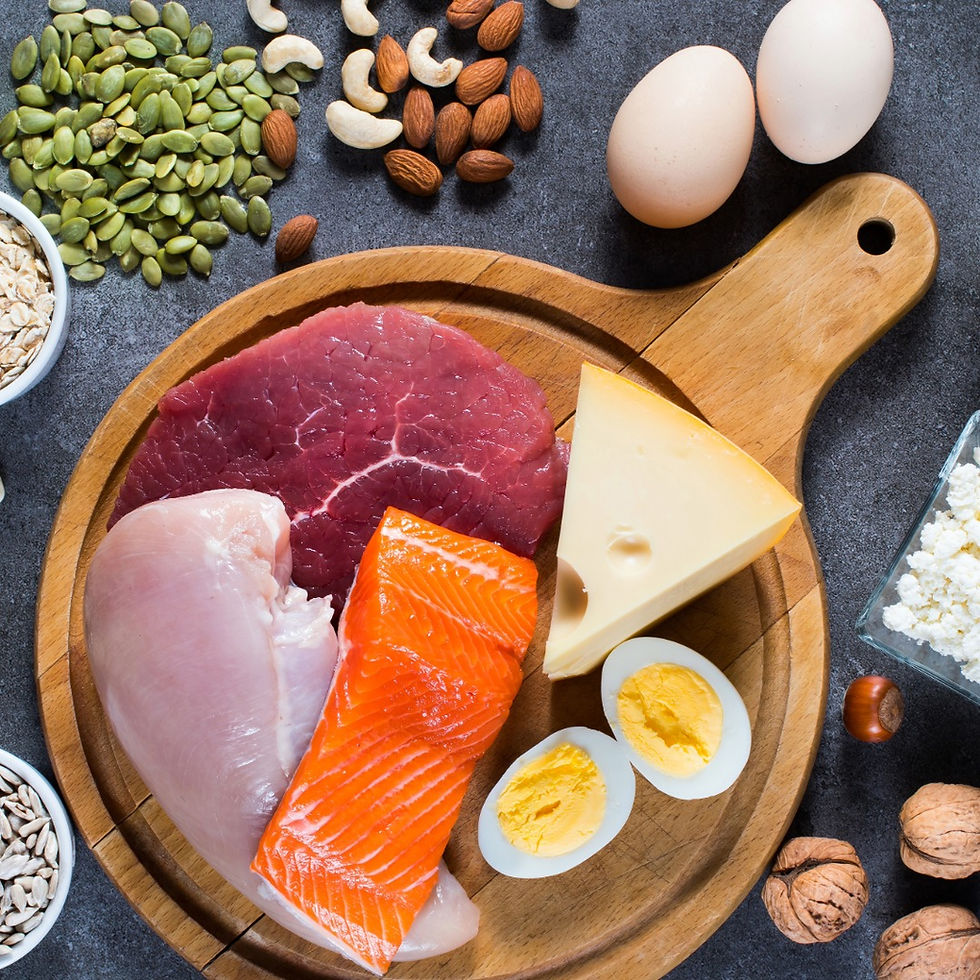Chin-Ups vs. Pull-Ups: Exploring the Best Upper Body Exercise
- packanimalfit
- May 16, 2023
- 3 min read
Matt Siekbert, owner of Pack Animal Fitness in Saint Petersburg, Florida, is
often asked about the age-old debate between chin-ups and pull-ups. As a
world-class bodybuilding and fitness coach, he has witnessed the benefits
and challenges of both exercises throughout his career. In this article, we
will delve into the nuances of chin-ups and pull-ups, exploring their
differences, benefits, and how they can help you achieve your fitness goals.
Understanding Chin-Ups:
Chin-ups and pull-ups are often used interchangeably, but there are key
differences between the two. Chin-ups involve a supinated grip, where your
palms face toward you. This grip recruits more of the biceps and places
slightly less stress on the shoulders and back muscles. Chin-ups primarily
target the biceps, upper back, and rear deltoids.
Exploring the Benefits of Chin-Ups:
1. Bicep Emphasis: Chin-ups place a significant emphasis on the biceps,
making them an excellent choice for those aiming to develop strong and
well-defined arm muscles.
2. Shoulder-Friendly: Due to the supinated grip, chin-ups generally put
less stress on the shoulder joints, making them a suitable option for
individuals with shoulder issues.
3. Beginner-Friendly: The chin-up grip is often more comfortable for
beginners, as it engages the biceps more and allows for a slightly easier
movement pattern.
Tips for Improving Chin-Ups:
To maximize the benefits of chin-ups and improve your performance, consider
the following tips:
1. Use Proper Technique: Ensure you have a full range of motion,
starting from a dead hang and pulling until your chin clears the bar.
2. Gradual Progression: Begin with bodyweight chin-ups and gradually
increase the challenge by incorporating resistance bands or weights.
3. Grip Strength: Strengthen your grip by incorporating exercises like
farmer's walks and forearm curls into your training routine.
4. Variations: Explore different chin-up variations, such as commando
chin-ups or narrow-grip chin-ups, to target specific muscle groups.
Understanding Pull-Ups:
Pull-ups, on the other hand, involve a pronated grip, where your palms face
away from you. This grip engages the back muscles, particularly the lats,
more intensely. Pull-ups primarily target the lats, lower traps, rhomboids,
and rear deltoids.
Exploring the Benefits of Pull-Ups:
1. Back Development: Pull-ups are known for their effectiveness in
developing a wide, V-shaped back, as they heavily engage the lats and other
key back muscles.
2. Core Activation: Pull-ups require significant core stabilization,
making them a great exercise for overall core strength development.
3. Full Upper Body Engagement: Pull-ups engage a broader range of
muscles compared to chin-ups, including the forearms, grip, and shoulders.
Tips for Improving Pull-Ups:
To enhance your pull-up performance and reap the maximum benefits, consider
the following tips:
1. Master the Basics: Start with assisted pull-ups or negatives
(lowering yourself slowly) to build strength and develop proper technique.
2. Strengthen Your Back: Incorporate exercises like rows, lat
pulldowns, and inverted rows to strengthen the muscles involved in pull-ups.
3. Grip Variation: Experiment with different grip widths and overhand
grips to target various muscles in the back and arms.
4. Weighted Pull-Ups: Once you have mastered bodyweight pull-ups,
progressively add weight to continue challenging your muscles.
Chin-Ups vs. Pull-Ups: Which is Better?
The question of whether chin-ups or pull-ups are better is subjective and
depends on individual goals and preferences. Both exercises provide
substantial benefits and are crucial components of a well-rounded upper body
workout routine. Consider incorporating a combination of both into your
training regimen to maximize muscle development and achieve a balanced
physique.
Chin-ups and pull-ups are iconic exercises in the world of fitness, known
for their ability to develop upper body strength and muscularity. While
chin-ups prioritize the biceps and are more shoulder-friendly, pull-ups
target the back muscles more comprehensively and engage the core.
Ultimately, incorporating a variety of grip widths and hand positions, as
well as progressively increasing the difficulty, will lead to optimal
results.
Remember, we are Stronger in Packs, unleash your fitness potential at Pack
Animal Fitness!
Take a tour of our great gym located at 5985 49th S N, Saint Petersburg, FL
33709.
Disclaimer: The content provided in this article is for informational
purposes only. Always consult with a qualified fitness professional and your
doctor before starting any exercise program or making significant changes to
your training or nutrition regimen.





